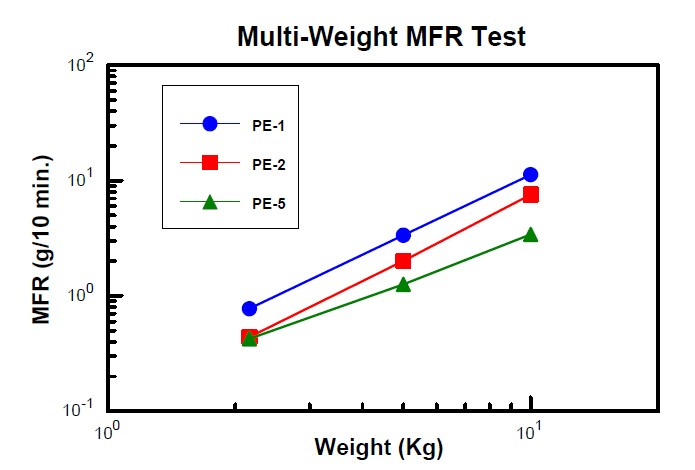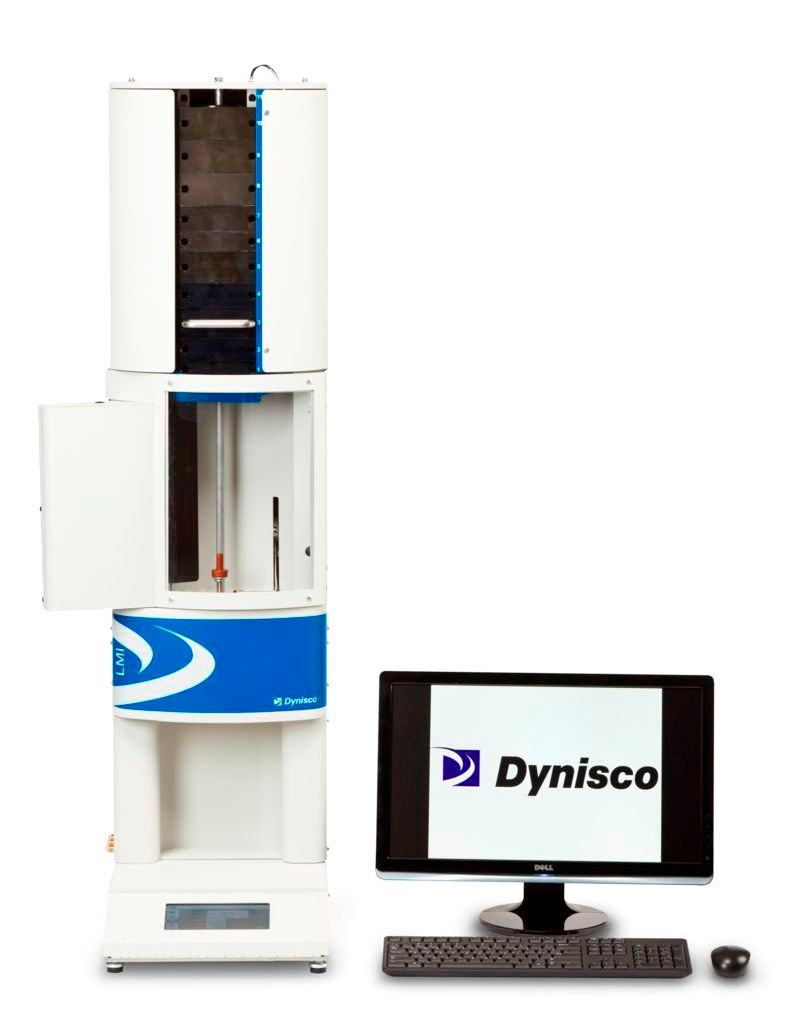It is possible to characterize the shear thinning behavior of thermoplastic materials using a Flow Rate Ratio (FRR) test method in an extrusion plastometer (melt indexer). This test method, “Procedure D” in ASTM D1238, is a multi-weight test designed to obtain two or three flow rates at two or three different load/shear stresses (generally of a 10:1 ratio) on one charge of material (at the same testing temperature).
The test results can be represented as FRR parameter, which is a dimensionless number. This can be calculated by dividing the melt volume flow rate (MVR) or the melt mass flow rate (MFR) at the higher test load by the MVR or MFR at the lowest test load. This is shown in the equation below:

The MVR and MFR data from various loads can also be shown as the flow curve of shear rate (utilizing the information of MVR and MFR of the plastic melts) versus shear stress (utilizing the information of loads and barrel surface area).

Image Credit: Dynisco
Polymer Power law index parameter can be determined using this graph. This represents the shear thinning behavior of the polymer melt. The information on the shear sensitivity and shear thinning behavior of the melt flow of plastic melts are manifestations of polymer melt elasticity and are highly sensitive to the polymer molecular weight distribution (MWD).
Two of the exact same polymers (with different lot numbers), which have the same MFR values at the standard weight (or same shear viscosity and same molecular weight), might show completely different melt flow behavior at higher loads/shear stresses. This is due to different molecular structures, for example different melt elasticity, different branching structure, different broadness of MWD, etc.
It has been suggested that a flow rate test should be conducted in a melt indexer with an automatic lift option, because this safely and automatically lifts the weights as required. The weights involved in this test method are fairly heavy and dangerous for an operator to be lifting routinely.

Image Credit: Dynisco
Flow ratio test must be operated in a Method B mode, with a minimum of two digital encoder flags. The second weight will automatically be lowered by the lift system onto the plunger between the first and second flag. Once the flags have been processed, the instrument will compute and display the information on the MFRs, FRR, and MVRs (if selected).
Acknowledgments
Produced from materials originally authored by Azadeh Farahanchi, Rheological Scientist, Ph.D.

This information has been sourced, reviewed and adapted from materials provided by Dynisco.
For more information on this source, please visit Dynisco.